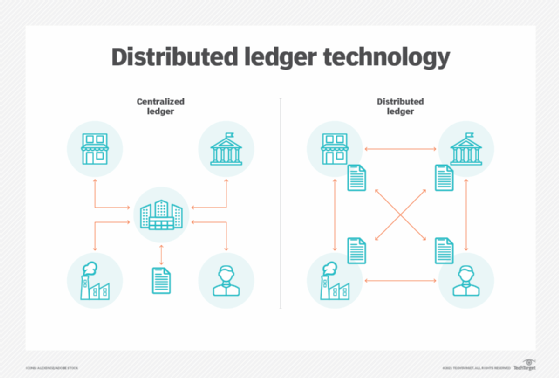distributed ledger technology (DLT)
What is distributed ledger technology?
Distributed ledger technology (DLT) refers specifically to the technological infrastructure and protocols that allow the simultaneous access, validation and updating of records that characterizes distributed ledgers. It works on a computer network spread over multiple entities or locations.
DLT uses cryptography to securely store data, cryptographic signatures and keys to allow access only to authorized users.
The technology also creates an immutable database, which means information, once stored, cannot be deleted and any updates are permanently recorded for posterity.
This architecture represents a significant change in how information is gathered and communicated As such, DLT removes the need for entities using the ledger to rely on a trusted central authority that controls the ledger, or an outside, third-party provider to perform that role and act as a check against manipulation.

Interest in distributed ledger technology grew significantly in the decade after the 2009 launch of bitcoin, a cryptocurrency powered From that time onward, organizations across industries experimented with DLT and how it could be used in enterprise processes. Financial services, healthcare and pharmaceutical sectors were early leaders, and supply chain management a common application.
It’s important to note that the concept of a distributed ledger is not new. Organizations have long gathered and stored data in multiple locations either on paper or in siloed software, bringing the data together in a centralized database only periodically. A company, for example, might have different bits of data held The great advancement of DLT is its ability to minimize or eliminate the often time-consuming and error-prone processes needed to reconcile the different contributions to the ledger, ensure that everyone has access to the current version and that its accuracy can be trusted.
